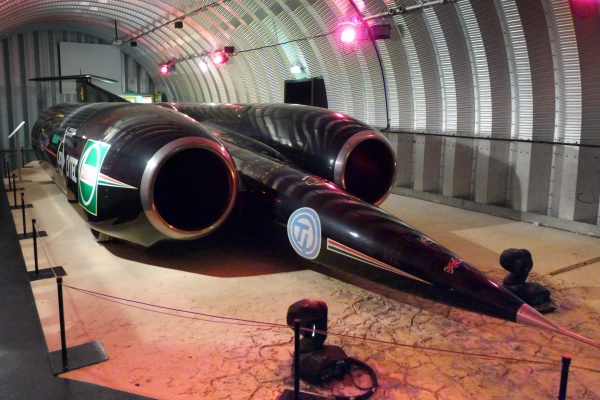Facts About ThrustSSC
ThrustSSC, also known as the Thrust Supersonic Car, is a remarkable British jet car designed by Richard Noble, Glynne Bowsher, Ron Ayers, and Jeremy Bliss. On October 15, 1997, it made history by setting the world land speed record, reaching an astonishing 763 mph (1,228 km/h) and becoming the first land vehicle to officially break the sound barrier.
This engineering marvel measures 54 feet in length, 12 feet in width, and weighs nearly 10 tons. It is powered by two afterburning Rolls-Royce Spey turbofan engines, producing a combined thrust of 223 kN. During its record-setting run, ThrustSSC consumed fuel at an incredible rate of 18 liters per second, generating a power output of approximately 102,000 bhp.
Wing Commander Andy Green was the intrepid driver who piloted ThrustSSC across the Black Rock Desert in Nevada to achieve this extraordinary feat. Before the record-breaking attempt, the team conducted test runs in the Al-Jafr desert in Jordan. Today, ThrustSSC and its predecessor, Thrust2, are proudly displayed at the Coventry Transport Museum in England.
The significance of ThrustSSC's achievement is magnified by the fact that it came 50 years after Chuck Yeager first broke the sound barrier in flight. Richard Noble, who had previously set a land speed record with Thrust2 in 1983, continued to push the boundaries of speed with this project. Inspired by ThrustSSC, other ambitious endeavors like the Bloodhound SSC and the North American Eagle Project are also striving to break the land speed record.
In 2012, a controversy emerged when Richard Noble accused Orange-Intel of using ThrustSSC's likeness without permission in an advertisement for the Orange San Diego mobile phone. Noble's complaint was dismissed by the Advertising Standards Authority, which stated that intellectual property issues were beyond its jurisdiction. Intel and Orange contended that the car featured in the advertisement was not related to Noble or the Bloodhound SSC project.

 Ireland
Ireland